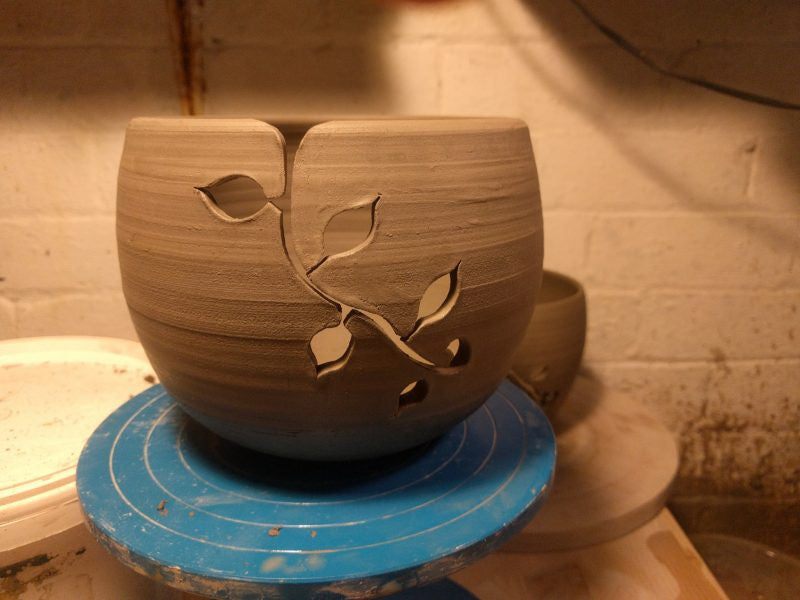
Carving Clay – How to make Stoneware knitting Bowls
Share
What is a knitting bowl?
In this article I demonstrate carving clay leaf patterns into knitting bowls. They are bowls used by knitters and crocheters to hold balls of yarn whilst working. This stops them rolling all over the place whilst the knitting needles are flying! Most knitting bowl designs have some sort of cutaway that allows the yarn to be threaded through. This means different projects can be done using the same bowl.

How I carve clay to create my knitting bowls
I have made a few different designs of knitting bowls in the past. This time I had the idea of a tree branch hanging down from the rim of the bowl.

To begin with I checked my weights and size guide from previous knitting bowls I’ve made. From this I kneaded a few lumps of 1.3kg clay. I prefer to make knitting bowls on bats so once a pad was thrown I attached my first bat. The bowls are thrown to 5″ heigh and 7″ wide, and they were trimmed at a later stage. I think it’s important to get a light weight in these pots as they could potentially be sat on a knitters knee.

I have tried to create a nice long branch decoration whilst considering the stresses on the clay. Removing too much clay at the wrong places could result in collapse during drying or firing.
I’ve had a problem with the rim of the bowl going out of line at the cutaway section during drying in the past. To combat this I’ve attached little balls of clay on the top of the rim where the cutaway begins. These keep the separated sections inline during drying, and are easily lifted off once dry.
During trimming and carving I’ve realised the weight of clay is a little generous for the thrown sizes. I will adjust my spreadsheet and use a bit less clay next time.
A new tool for carving clay
Previously I have used a variety of knives to carve clay with. I have even used a fish knife from the kitchen as it had a thin flexible blade. They have all been lacking in sharpness, and the handles a little cumbersome for intricate work.
I decided to treat myself to a proper scalpel type craft knife. It has a thin round handle that twists nicely in use, and replaceable blades. So far I have been very happy using it, though I could do with more practice to become a proficient carver.
